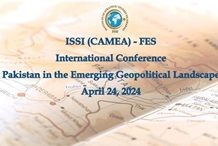Educational opportunities in China
China has emerged as a knowledge-based society. In recent years, China has emerged as an important destination for foreign students. The top ten countries with students studying in China include Pakistan besides students from Korea, Japan, USA, Vietnam, Thailand, Russia, India, Indonesia, and France. The enrolment exceeds 200,000 in number.
It looks that the process of studying in China is on the rise among the young generation in Pakistan for multiple reasons: finances, change of educational and immigrations laws in the West after 9/11, the growing hate culture against the Muslims in the West, entrance qualification tests, and many other hurdles.
A large number of students from Pakistan are studying in universities and colleges in China as undergraduates, graduates and postgraduates including post-doctoral fellows. Most of these students study medicine, followed by engineering and solid sciences, and even social sciences in some cases.
Many go on their own but there are extensive scholarship programmes offered by the Chinese government through Higher Education Commission of Pakistan. About 220 students annually go for higher studies in Chinese universities under these scholarship programmes administered by the Chinese government. Pakistan ranks high among China’s international scholarship programmes. There are also exchange programmes for middle and high school students between the two countries.
National University of Modern Languages (NUML) at Islamabad teaches Chinese language courses. There is a Confucius Institute along with another one by the same name at the University of Karachi. They have frequent student exchanges. Besides universities, some private schools teach Chinese language. The awareness about Chinese language is on the rise.
Under the environment created after the war on terror, difficult entrance conditions and visas restrictions forced more students to go to China instead of USA, Canada, Britain, Australia etc. The number of students is declining in these countries, but it is rising in China. Over 10,000 Pakistani students are currently studying in China and the number is constantly increasing. Majority of students have been studying in Xinjiang in Western China, bordering Pakistan.
China’s educational presence in Pakistan is as important as that of defence and trade. In return, there are over 6,000 Chinese students in Pakistan. The number of Chinese teachers in Pakistan is also on the rise.
There are four Pakistan Studies centres located in Tsinghua, Fudan, Sichuan, and Xu Zhou Universities. There are Pakistan Studies programmes that introduce Pakistan’s history, language, culture, etc. Programmes are also launched via video conferences across many universities in Pakistan to learn simple Chinese language and culture.
A China Study Centre at the COMSATS Institute of Information Technology (CIIT) was set up to facilitate promotion of trade and business between Pakistan and China by providing a platform for cooperation to their entrepreneurs. Over 80 faculty members of the CIIT hold PhD degrees from Chinese universities and over 35 faculty members are currently pursuing their PhDs in different Chinese universities.
Chinese educational institutions offer alternative means to the middle class people in Pakistan to seek quality education as they cannot enroll their children in expensive Western system. Many could not qualify their entrance examinations. Chinese educational entrance is more receptive and comes with less entrance conditions. Moreover, Pakistani students feel at home in Chinese educational environment. They could easily come back to their families during vacations.
Still over 45 percent Pakistanis cannot read and write. This is an alarming situation for sustainable human development in the country. Pakistan needs to adopt a revolutionary literacy programme on war footing like China. Pakistan urgently needs to learn and adopt Chinese literacy programme. North Korea is the only Asian country with 100 literacy rate. It is the pride of Asia.
The former Soviet Muslim states of Central Asia have high literacy rate but that was due to Communism. Pakistan needs to focus on this region so that its students can go there for study. And for that China could play a pivotal role.
The century-long direction of a ‘literate Pakistan’ would change from the West to the East in the coming years. The Western educated elite phenomenon is ending in Pakistan. The country needs to learn from China and Central Asia to overcome its literacy menace.
Pakistanis must prepare for a cultural change, with more interactions with eastern countries including with China. There is no other way to jumpstart in this field. Otherwise, it would require another century to make the remaining 45 per cent of illiterates in Pakistan literate. The new ‘orientalism’ and ‘literate Pakistan’ should go along with the rise of an Asian century.
Views expressed are of the author and do not necessarily reflect the views of ISS or of the Government of Pakistan.












